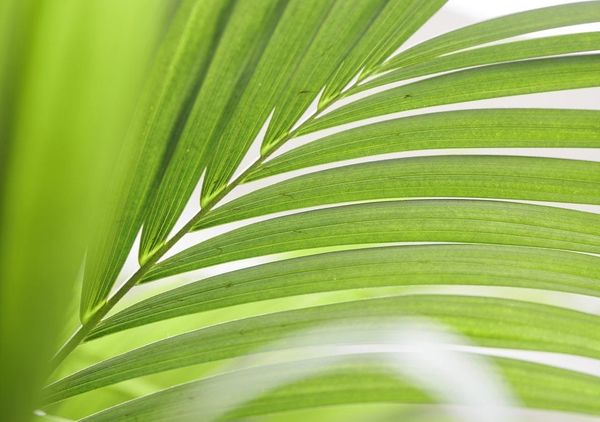Do you love the tropical look of a palm tree? Do you want to bring a tropical plant to your home?
Then why don’t you go for a kentia palm?
Kentia palm plants are one of the variants of tropical palm plants and are notorious for being able to withstand conditions that many houseplants can’t tolerate. Apart from that, an indoor Kentia palm can have a formidable height that makes it an outstanding focal point and beautiful attraction in interior landscapes.
This exotic kentia palm cleans and improves air quality by filtering toxins from the surrounding environment adds another reason to bring it home.
The Howea forsteriana or Kentia palm is also named as the thatch palm or court palm, with an illustrious history. It was a favored plant of Queen Victoria, who had these plants in all of her homes.
So let’s dive into the article below to find more about a kentia palm.
Plant Overview

The Kentia Palm is a perfect indoor palm that is elegant, air-purifying, and resilient. This tropical beauty can tolerate neglect to a certain extent, cooler temperatures, and dry air conditions that make it a low-maintenance, easy to grow, and trouble-free palm to provide lush, leafy, tropical foliage and an exotic element to any home or office interior.
Scientifically named as the Howea forsteriana, this palm originates from Lord Howe Island, Australia. This palm is non-toxic in nature and therefore safe for small children and animals. so if you are a gardener who is also a pet lover, this kentia palm is the best option for you.
Kentia palms are generally sold in the market with two or three stems of the plant potted together, that give a shrub-like appearance to the plant. The overall effect resembles an architectural green giant with a soft, feathery edge.
How to care for kentia palm?
Light
When caring for your Kentia palm, the main thing to remember is that the plant is a tropical plant that is native to a jungle-like environment. So you need to recreate that means for your palm ensuring that they get indirect sunlight.
if your palm weren’t acclimatized to bright, direct sunlight as a seedling, their leaves are likely to scorch. So you need to be extra careful when exposing your Kentia palm to direct light in any way.
Although these plants can thrive well in low light, the foliage of the plant will be more attractive, bushy, and full in filtered, soft light. So it is suggested always to aim to put it in a spot that’s light but not too light.
Soil
Kentia grows and flourishes in sandy soil in its native environment, which provides the plant with the much-needed drainage that the palm requires for healthy growth. However, it can grow in a variety of soils. Just make sure to provide the plant good drainage system, adding some fertilizer to the medium to promote good growth.
When it comes to preparing a potting mix for your kentia palm, You need to prepare the soil in a mixture of straight potting mix, or other potting mixtures with good drainage to grow your plant.
Although you can use potting soil, it is recommended to add sand to the soil to decrease its heaviness and increases the soil’s capability to drain. Potting soil is usually too heavy which has the tendency to retain too much moisture and can lead to problems with root rot. So never use potting soil directly.
You can prepare the potting mix by mixing equal portions of potting soil and coarse sand or equal portions of coarse sand, peat, and potting mix. But while you are deciding a mix, make sure that the soil mixture contains a bit of fertility to promote the best growth.
Water
When it comes to watering the kentia palm, you need to water the plant at regular intervals but make sure to avoid sogginess at any cost.
Although it’s important to keep the plant well-hydrated always, you should water carefully so that the soil must fully dry out in between waterings otherwise the leaves of the plant could start to brown and ends in showing the sign of root rot.
However, if the fronds of your kentia palm start developing brown tips that could be a sign that the palm needs more water. So keep an eye on reducing the frequency of waterings during the autumn and winter. But always make sure to give your plant full guidance on what it needs.
Temperature
Being a tropical plant, Kentia Palms thrives well in warmer temperatures. The prime indoor temperature for the plant to grow ranges between 65°F (18°C) to 85°F (29°C).
However, this palm is hardier than other palms and can even survive if temperatures drop below freezing. but it will grow at its best if the temperature is kept warmer.
If you are growing your Kentia palm outdoors in a container, make sure to bring your plant indoors to a warm location before the cold weather strikes in winter. Once the weather warms in spring, you can once again place your plant back outdoors.
Humidity
Kentia palm thrives to grow in plenty of humidity. So it is necessary to create a decent amount of humidity for better growth of your plant.
So it is necessary to spray the leaves of your plant lightly with water once a week that can provide the right amount of humidity to your plant. If you reside in a very dry environment, the best way to increase humidity levels for your palm plant is to place its pot on a tray of wet stones.
Fertilizer
As the kentia palm originated from the tropical region, it doesn’t require any type of fertilizer. It receives its all nutrients for its growth from the soil. However, providing a little amount of fertilizer can reward you with healthy foliage and proper growth.
So in order to keep your palm producing rich green fronds and happily growing, feed your plant monthly throughout the growing seasons of spring and summer. But don’t use fertilizer during fall and winter, as the palm tree is in its dormant stage at this time and stops putting on new growth.
Use an organic palm fertilizer blend or a slow-release fertilizer blend for the better growth of your plant. While using slow-released fertilizer just sprinkle the fertilizer over the soil. It will slowly break down with each water application and you don’t require to apply fertilizer repeatedly for several months.
How to propagate your kentia palm?
Kentia palms are commonly sold in the market in groups of two to five palms potted together, which gives the tree the appearance of having multiple stems. So you can propagate your kentia palm simply by division of the multiple trees. Propagation of the plant can be done anytime. However, it is recommended to propagate your plant in the spring or summer.
Following is the procedure by which you can propagate your palm.
- Gently loosen the soil and remove the root ball of the plant from the pot.
- Then, select a palm that you want to remove from the pot. Slowly tease apart the roots of the plant from the rest of the root ball. However, it is recommended to aim to keep all of the roots as intact as possible.
- Replant your separated palm stems in a suitable growing site or medium. Besides, you also can replant the rest of the palms together as they were, or continue separating them.
Conclusion

As you read the article this far, you might have the best idea about how to grow and care for this tropical plant.
Kentia plant is a beautiful tropical plant that can bring a wonderful, natural elegance to indoor locations.
Being a low-maintenance plant, this leafy beauty can bless your living room, kitchen, or bedroom with its distinctive arching foliage and impressive stature With just a little care and attention.
So what are you waiting for?
Bring this plant to your home and let us know how it is going.
You may also like to read
How to grow and care for Pineapple Lily plant – A step-by-step guide
How to grow and care for poinsettia plant-A step by step guide






